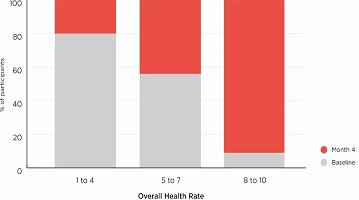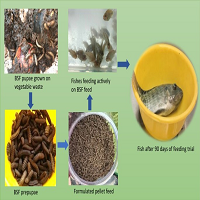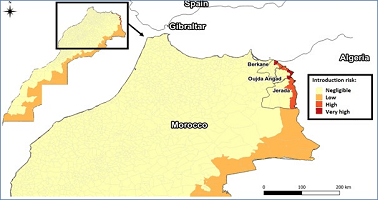One would wonder how bone forms the core of Anthropology. This short editorial will focus on the importance of bone_ one of the skeletal elements used in anthropological investigations.
Osteology of course is the scientific study of bones, practiced by osteologists, a subdiscipline of anatomy, anthropology, and archaeology. It is a detailed study of the structure of bones, skeletal elements, teeth, microbone morphology, function, disease, pathology, the process of ossification (from cartilaginous molds), the resistance and hardness of bones (biophysics).1 Osteological approaches are frequently applied to investigations in physical anthropology.
Anthropology is viewed as the study of various aspects of humans within societies, the past and present.2 While biological anthropology, also known as physical anthropology, is a scientific discipline which deals with the biological and behavioral aspects of human beings, their related non-human primates and their extinct hominin ancestors. It is a subfield of anthropology that provides a biological perspective to the systematic study of human beings. Thus it addresses the intersection of behavior, culture and biology and how these systems impact health and well-being.3
An anthropologists (forensic) specializes in the analysis of human skeletal remains in a medico-legal sense. The human skeletal can be an invaluable resource when a portion or all of the soft tissue is gone. Forensic anthropologists assist criminal investigations by analyzing decomposed human remains to establish the identity of the deceased. This is accomplished by determining the “big four of forensic anthropology”: sex, age, race and stature.4
SEX
This is one of the easiest tasks as there are only 2 choices. Sexual dimorphism which is the differences in the size and shape that exit between males and females helps in determining the sex of the remains. The marked appearance of sexual dimorphic traits on bones is not apparent until puberty; so it is easier to assign the sex of a skeleton to an adult as opposed to the underage.
In sex determination/estimation nearly all the bones in the skeletal system have been used. Methods applied are divided by metric analysis and morphological or visual analysis. Both types of methods are similar to each other in accuracy of determinations5 and each has its own strengths and weaknesses. However and more traditionally, 2 main skeletal features/ structures have been used by researchers to determine the sex of an individual. This includes the pelvis6 and skull.7,8,9
The pelvis is a basin like shape bone–the transition between the trunk and the lower limb,10 it is extremely useful in the determination of sex because it offer the most accurate determinations. When properly examined can achieve sex determination with a great level of accuracy.11 The examination of the pubic arch and the location of the sacrum can help determine sex also. Anatomically, the male pelvis is longer, robust, and displays more rugged features with marked muscle insertions whereas the female pelvis shows a wider sciatic notch with an obtuse angle.12
The skull/cranium also called the skeleton/bone of the head13 contains land marks that can be used to determine sex. This includes the temporal line, supraorbital ridge, eye sockets, nuchal lines and the mastoid process. More specifically Craniometric points like pterion, lamda, bregma, vertex, asterion, glabella, inion and nasion have also been employed as reference points in the study of skull by both the Anatomist and Forensic Anthropologist. Male skulls tend to be larger and thicker than female skulls, and to have more pronounced ridges.9
AGE
Cranial sutures are important factor use in age estimation. Basic anatomy reveals that at birth, the human cranial vault consists of 7 separate bones; by age 5, these knit together at the cranial sutures, zigzagging joints that interlock. Around age 30, the sutures generally begin to fill in with bone and smooth out; eventually they may become completely invisible or obliterated. Another helpful factor is epiphysis union. During our youth, the ends of our long bones called the epiphyses are not yet fused to the shafts; instead they are connected to the shafts by cartilage allowing the shafts to grow throughout childhood. Beginning in early adolescence, the epiphyses begin to fuse, gradually halting the growth of the bones shafts. The epiphyses fuse at different times throughout the growth cycle. For example, during the adolescent age uniquely, a secondary epiphyseal ossification center appears at the medial end of the clavicle that results in growth and remodeling of the bone at approximately 18-25 years. But complete growth of the bone (epiphysis completely fuse with the shaft/diaphysis) between 25 and 31 years of age.13,14 Also by the age of 18 years, hand ossification, 3rd molar mineralization and sexual maturation are complete so hand radiography and dental age assessment are therefore futile.15
Another possible way to estimate the age of an adult skeleton is to look at bone osteon under a microscope or to look for arthritis indicators on the bones. Results show that new osteons are constantly formed by bone marrow even after the bones have stop growing. Younger adults have fewer and larger osteons while older adults have smaller and more osteon fragments while on the other hand arthritis will cause noticeable rounding of the bones.16
The need for accurate estimation of age arises in conditions where the age of a child needs to be accurate,15 such as during immigration,17 in law suits18 and in competitive sports.19 In these cases bone age is used to provide the closest estimate of chronological age.15 This indicates that the bone/skeleton is the frame for age determination and is a vital tool in forensic investigations.
RACE
The determination of an individual’s race is typically grouped into 3 historical groups, Caucasoid, Mongoloid, and Negroid. However, the use of these classifications is becoming much difficult as the rate of interracial and intertribal marriages increases and markers become less defined. By measuring distances between landmarks on the skull as well as the size and shape of specific bones, anthropologists can use a series of equations to estimate race. Typically, the maxilla-one of the facial bones is used by the anthropologists to determine an individual’s race due to the three basic shapes-hyperbolic, parabolic, and rounded, belonging to the three historical ancestries-Negroid, Caucasoid, and Mongoloid respectively. In addition to the maxilla, the zygomatic bone/arch and the nasal opening have been employed to narrow down possible races in the world.20
STATURE
The determination of stature by anthropologists is based on series of formulas that have been developed over time using either long or short bones or the combination of both. Stature is given as a range of possible values, in centimeters, and typically computed by measuring the bones. The lower extremity bones that are used are femur, tibia, and fibula. In addition to the lower extremity bones, the bones of the upper extremity-humerus, ulna, and radius have also been used. More recently researchers have estimated stature from cephalo-facial anthropometrics.21,22
The formulas that researchers used to determine stature rely on information regarding the individual such as the sex, race, and age. These should be determined before attempting to ascertain the height of the individual possibly because of the differences that occur between populations, sexes, and age groups. By knowing all the variables associated with height, a more accurate estimate can be made by the investigators.
Thus, the bone is the frame of our life and the frame of the “big four of forensic anthropology” (sex, age, race and stature) because each of the big fours can be determined from the frame of life (bone).
Researchers are therefore welcome to submit manuscripts to ANTPOJ not only limited to ostemetric evaluation, somatometric, cephalofacial but also other studies (radiography, embryology and biometrics) in which the frame of life forms their basis.







